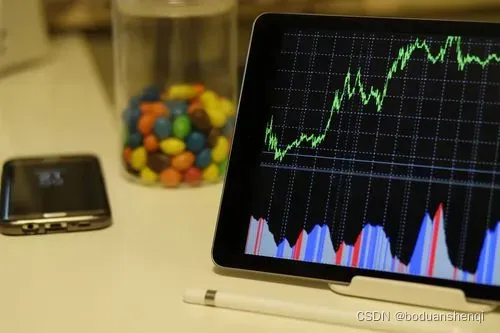The traditional buy-and-hold portfolio is no more. Although I may be exaggerating, the increased volatility in the stock market is forcing a change.
Swing trading is a great way for investors to adapt their investing strategy. This can help to reduce volatility while also accelerating wealth creation.
Increased volatility is a hallmark of the new investing world. This volatility is caused in part by the algorithms that dominate investing. A small wave of selling can cause huge waves of algorithmic sales in response.
As evidence, look at the rapidity of the collapse of the market at the beginning of the Covid-19 epidemic.
Table of Contents
Swing Trading: What is it?
You can read more about it here:
Swing Trading vs. Day Trading Swing Trading
How do you make a living from day trading?
Swing Trading: The Key Advantages
Candlestick charts for swing trading
Swing trading strategies that work
Trading Moving Average Trends
Double Top or Bottom
Conclusion: Mind Your Emotional Intelligence
Swing Trading: What is it?
Swing trading is a great way to combat this volatility, and to boost the returns of investors.
Swing trading is a shorter-term investment. Long-term investing can have a timeframe measured in months, if not even years. Swing traders are looking to profit from price changes that can last anywhere between a few days to several weeks.
Investors who are concerned about a sudden fall in the stock markets can use inverse Exchange Traded Funds, such as SQQQ. Some investors may want to add exposure to commodities or foreign currencies to their portfolio.
Trading is something that some long-term investors may be hesitant to do. Some investors may view trading as being too risky.
As I will explain, this doesn’t need to be the case. Also, keep in mind that buy-and-hold portfolios are not immune to risk. It’s the exact opposite.
Swing traders are interested in profiting from price fluctuations that occur relatively quickly, such as those of stocks or financial instruments. Fundamental analysis is not as important to them as it is for buy-and-hold investors.
Price charts are what swing traders use instead.
In these charts, traders search for patterns that are recurring and may provide clues as to the future direction of prices.
They also have a number of technical indicators which can help them decide when to buy or sell. Swing traders are focused on risk management, which is the protection of their money.
Rule No.1: Never lose money. Rule No.2: Never forget rule No.1.
Warren Buffett
Warren Buffet, the legendary investor, said: Losing money is not the key to creating wealth. Swing traders manage risk to increase their potential profits. For example, they may aim to earn at least $3 for every dollar risked.
How many investors who buy and hold can you name that are able to define the point where the original investment’s premise no longer holds true?
I bet you won’t find many.
Swing trading is less risky when combined with a highly disciplined approach to risk management.
You can read more about it here:
Investors tend to use fundamentals, while swing traders use primarily price charts.
Swing trading is a method of profiting from price fluctuations that occur in a short time frame.
Before a trade, the risk/reward of a swing trading is calculated.
Swing Trading vs. Day Trading Swing Trading
You may have a better understanding of day trading than swing trading.
Day traders are those who look to make a quick profit from short-term price movements during the day. They will often open and close positions during the day.
They will often buy and sell several times. As a result, they plan their trades by using price charts and minimizing the time period.
Day traders typically use price charts that are divided into 1 hour, 30 minute, 15 minute, 5 minute, 1-minute or tick charts. Each point represents one hour (or whatever period) of trading activity. Each tick represents a small change in the price.
You can imagine that the price chart will look more ‘busy,’ the shorter the timeframe. It can be difficult to discern sustainable price changes in the randomness of the market.
Day traders will almost exclusively rely on technical indicators, and are less concerned with the factors that drive price over longer periods of time.
Swing traders will, despite using a lot of technicals and relying on them heavily, take their risks home with them overnight. They hold their positions for several days or even weeks.
These traders are looking to make money from a strong, single price change (swings). Traders will plan their trades primarily using daily charts. Even though shorter time frames such as 4 or 1 hours, or even lower may allow for more accurate calculations.
How do you make a living from day trading?
I am arguing for swing trading to be part of a larger portfolio. I am not suggesting that you quit your job and take up day-trading.
I have done this myself; I traded commodities and currencies futures for a time, so I can speak with authority about the topic.
My own experience has taught me that day traders must spend a lot of time each day at their trading computer. Swing trading is different.
I’m not a fan of day trading. It was very intense and exhausting at times; I would not recommend it. If you have the right emotional makeup and are super motivated, then don’t let anyone stop you.
Technical analysis is the key to successful day trading. Beginner traders must realize that they are competing with algorithms who do everything they do in milliseconds.
Swing trading can also be relaxing if done correctly. Swing traders can also ignore the daily financial cycle, which is part of “noise.”
Swing Trading: The Key Advantages
Swing trading is a great way to make the most of your limited time.
You can make trading decisions once per day. This could be at the end or beginning of the day. Orders to place new trades for the following day are then emailed to the broker. You’re risking an amount with the hope of earning a lot more. You don’t always know which of your swing trades is going to be profitable.
What’s the best you can do as a tradesperson? There’s absolutely nothing you can do. You don’t need to keep track of what is happening on the market. It will work out or not. You can continue working at your job or doing whatever else you want.
Swing trading can also introduce traders to margin trading.
Margin trading is not new to swing and day traders, but to investors it may be.
Margin trading is a way for traders to borrow money from their broker in exchange for interest. Trading on margin allows the trader to commit less capital in a single trade.
The capital can be used more efficiently. A small percentage of an investor’s capital, say less than 10%, might be allocated to swing trading.
This 10% allocation allows him to protect his buy-and-hold portfolio over the long term while also taking advantage of price fluctuations. Diversification of markets and strategies should increase his overall return.
This allows you to keep track of the latest economic and political events that could impact the prices of currencies, commodities, or stocks.
Swing trading strategies and principles can be used on all markets. This includes forex, commodities and stocks.
Candlestick charts for swing trading
You will hear this term all the time when you start learning about trading. It’s not a mystery. It’s just a reflection of how the price changes are affected by supply and demand.
We have one of the most simple but ingenious tools for analysis ever created – the Candlestick Chart.
The first candlestick was invented in the 17th Century by Japanese rice traders. The candlestick gives five important pieces of information at a glance about any instrument.
The body of the candle will show us the opening and close levels. The color of the candle will show us whether or not the price has increased or decreased over a given period.
The wicks or shadows will show us the high and low price levels reached in the same time period.
Once you know what you are looking for, a single lamp can reveal a lot of information.
It is better to understand the patterns that are typically formed by successive candlesticks.
The foundation for success is a thorough understanding of these patterns. These patterns will show you if the price is stuck in a range horizontal or if it’s strongly trending in one direction.
The software will tell you where to place your trades and when to exit them.
Two simple swing trading strategies that work
Several technical indicators are available to help interpret the candlesticks and take action. They are easy to use in today’s trading platforms.
Simple swing trading strategies also make use of candlesticks as well as indicators to generate high profits. Here are a few common strategies. Check out this blog post if you want to know more.
Trading Moving Average Trends
Moving averages are the average closing price of an instrument over a certain number of periods. Moving averages appear as lines on price charts.
Exponential Moving Averages are more useful. These averages place greater emphasis on the most recent price movements.
It’s fascinating to note that traders use these EMAs to determine where they want to buy or sell. Swing traders use EMAs to enter and exit trades. EMAs have become so popular that they are almost self-fulfilling.
When entering a trend it is best to wait until the price has pulled back and stopped. Often this consolidation will bring the price to the EMA just before the trend resumes.
A small candle body close to the EMA is a low risk entry. The price tends to hug or follow the EMA when it moves up or down.
Below is an example of a typical trade in a bull trend.
Chart of the bull market trade
The trend is your friend is a popular trading phrase.
This entry was simple and led to a 7 day move with a healthy profit.
Profits can be taken when the target is reached – idealy, it should be three times what we are risking.
We can allow the trade to run its course if we want the maximum profit.
As in this case, when the price is too far from the EMA it will most likely pull back.
We could have still exited the market safely and profitably if the first red candle had closed below the EMA.
This type of trade is often seen in markets that are strongly trending. It’s a great way to start for beginners. Markets are usually sideways and prices are trapped in a range of horizontal price.
We need another strategy to maximize our profits. We need to have a trading strategy that will allow us to trade at times when the price reverses frequently.
Double Top or Bottom
Price reversals can be predicted by double tops or bottoms. They occur when trends lose momentum or the price is stuck in a range.
This is a simple swing trading strategy. Double top and bottom partners are formed when the price fails to break through a level of support or resistance in two separate attempts.
Double tops and bottoms are often shaped like letters M or W.
These patterns are not perfect.
The top and bottom of the price chart will not always be exactly at the same level. Support and resistance lines are not always horizontal. It is possible that there are several small candles between the tops of the candlesticks.
It’s not important to find perfect geometrical patterns, but rather to identify clear areas of resistance and support that the price has responded to at least twice.
Here is an example of a double bottom and top that could have both led to profitable swing trading.
Double top chart
Conclusion: Mind Your Emotional Intelligence
Two basic swing trading strategies are described above. You can choose from a variety of strategies; test them to see which one works best for you. All of them can help you create wealth faster.
Your mentality and emotional control are more important than any strategy. Of course, don’t forget risk management.
You will never be successful at trading, no matter how many technical skills you have acquired.
Swing traders need patience. They can wait days, or even weeks, for the perfect trade.
You must be able, perhaps above all else, to accept the inevitable losses that even the most successful traders will experience. This can be done by learning from your mistakes and patiently waiting for the next trading opportunity.
This article was originally published on Wealth of Geeks. It has been republished by permission.







